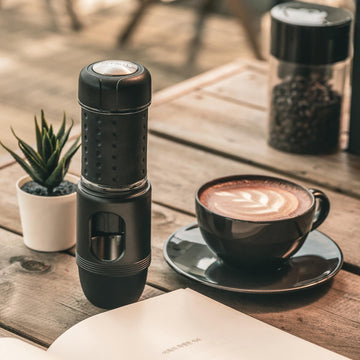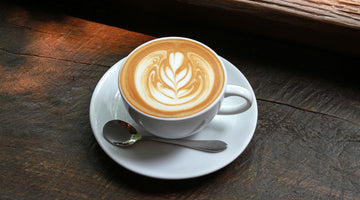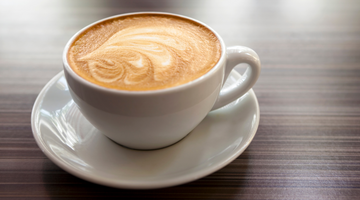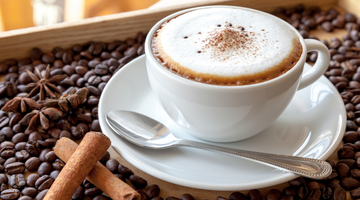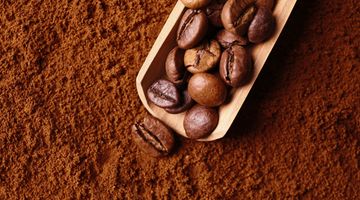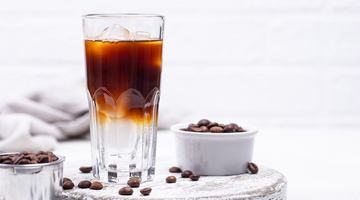The latte is one of the most popular coffee drinks, the most chosen drink at Starbucks U.K., and the third choice in the U.S. Why has it become so ubiquitous and frequently ordered? Is it the creamy flavor, rich history, or myriad of ways it can be customized?
Let's find out what a latte is, how to make your own, and customize it to fit your taste.
What is a latte?
A latte consists of three components: a strong espresso shot, steamed milk, and a layer of milk foam to top it all off. Of course, there are variations on this that we'll get into later, but these are the bare essentials. A latte is usually 8oz with a single shot of espresso and 12oz for a double.

What's in a latte?
Let's get into the main ingredients of the latte in more detail, down to the quantities of each and when to add them to your mug to make the ideal brew.
First, you need a shot of strong espresso to base any good latte. Luckily, the STARESSO Classic Espresso Machine makes consistently robust espresso every time.
Next comes the steamed milk. Now there's lots of debate about what kind of milk is right for a latte. Traditionally, it's whole milk, but many people now favor oat milk because of its smooth taste and mouthfeel.
Finally, a latte is topped with milk foam, which tends to be decorated with a leaf or floral motif. The milk foam also adds to the creamy smooth texture of the latte, so while it might seem like an extra you can do without, it's a crucial component to any good latte.
What's a latte's coffee/milk ratio?
The typical latte's coffee-to-milk ratio is 1/3. A latte usually contains 1-2 oz of espresso, which takes 1/3 of the cup, with 8-15 oz of steamed milk covering 2/3. However, if you make a latte at home, you can choose the ratio that fits your taste. Some people follow a 1/4 rule for a milkier latte. Alternatively, if you fancy an extra shot of espresso, this will again affect your coffee-to-milk ratio.

History of the latte
Historians can't really pinpoint when the latte was 'invented', but records suggest that milk-based coffee has been around since the 17th century. Across Europe, there are many variations, such as the caffe latte in Italy and the Spanish cafe con leche.
After WWII, American G.I.s returned to the States with the first espresso machines from Italy to get the delicious coffee they'd grown accustomed to. Many Americans found the flavor of espresso on its own too overpowering and added milk to dilute the strength.
Finally, it was in Seattle during the 1980s that the latte craze truly began in the U.S. Fans of the 90s sitcom Seinfeld might recall the episode when Kramer becomes obsessed with the latte, which has become the drink in New York City.
How is a latte made?
These are the basic steps to making a latte:
Step 1: Pull an espresso shot
Step 2: Steam the milk to the right temperature and texture.
Step 3: Combine the espresso and steamed milk, then add the milk foam.
How to make a good latte at home
Now you know the basics, it's time to learn how to make a good latte at home.

Equipment needed to make a latte
-
Burr coffee grinder, or one that can grind an espresso-grade grind, like the STARESSO Discovery or Discovery II Electric Grinder
-
Scales or spoon for measuring (if you're using Discovery II Grinder then skip this part)
-
Milk frother / Steam wand
-
Milk pitcher
-
Thermometer
How to make latte coffee
Brew the espresso
If you have an espresso machine, prepare a shot or two of espresso according to the machine's instructions. If you don't have an espresso machine, you can brew a strong cup of coffee using your preferred method, such as a French press or AeroPress.
Froth the milk
Pour the milk into the pitcher and heat it to around 150-155°F (65-68°C). If you're using a steam wand, position it just below the surface of the milk and turn it on, allowing steam to heat and froth the milk. If you're using a standalone frother, follow the manufacturer's instructions to froth the milk.

Texture the milk
Aim for a velvety microfoam texture. This means you want tiny, uniform bubbles throughout the milk, rather than large bubbles on top. Swirl the milk in the pitcher to integrate the froth and milk.
Prepare the cup
Pour the espresso into your desired cup or mug. If you're adding any flavorings or sweeteners, do so now and give it a quick stir.
Pour the milk
Hold the pitcher with the frothed milk at a slight angle and pour it slowly into the cup with the espresso. Start by pouring from a higher position to allow the milk to mix with the espresso, then lower the pitcher as you continue pouring to create a layered effect.
Finish and serve
Once you've poured the desired amount of milk into the cup, you can use a spoon to hold back the foam as you pour, then spoon some of the froth on top of the latte. Optionally, you can sprinkle some cocoa powder, cinnamon, or nutmeg on top for added flavor. Serve your latte immediately, and enjoy!
Benefits of making a latte at home
While it's a pleasure to have a latte made for you by a professional barista now and again, there are lots of great reasons to make lattes at home, too!
Cost savings
The big one is money. The average latte costs around $3-5 in the U.S., while a homemade latte might cost as little as $0.40!
Customization
If you make your own, the world is your oyster. Experiment with ingredients, flavors, milk type, and strength to make seasonal and delicious lattes.
Convenience
At home, you can make a latte whenever you fancy. And, with the STARESSO Classic Espresso Machine, it's easy too!
Latte variations and styles
These days, numerous latte variations are available to make or buy, not to mention the coveted seasonal specialties we can look forward to from certain well-known coffee shops.
Flavored lattes
Flavored lattes are one of the most common customizations. They are added in syrup form and are easy to do at home. Some of the most popular flavors are caramel, hazelnut, and vanilla.
Seasonal and specialty lattes

There are definitely seasonal favorites, such as the pumpkin spice and peppermint lattes, that coffee lovers look forward to drinking in the cooler months. To get these delicious flavors at home, you can purchase bottled syrups or make your own from scratch. Syrups are made by dissolving sugar in hot water and adding specific ingredients. For the pumpkin spice latte, think of autumnal flavors such as cinnamon, nutmeg, and some pureed pumpkin.
Try experimenting with shop-bought flavorings or just ingredients you have at home.
Latte art
One of the standout features of a latte is the artfully created patterns baristas make in the foam. While traditionally floral or leaf motifs, there are more creative and intricate designs out there.
Latte art is created when air is added to the steamed milk to produce a microfoam that 'stretches' to produce a special design.

Frequently asked questions about lattes
What is the difference between a latte and a cappuccino?
At the heart of it, a shared trait in latte and cappuccino is espresso, milk foam, and steamed milk ratio. If we compare the two types, the latte contains more steamed milk and thinner foam, giving it a rich consistency and smooth feel. A cappuccino includes the same amount of each ingredient, giving it a weak flavor but a thicker texture.
Are lattes high in calories?
Calories in a latte can depend on things like the kind of milk used and whether any flavorings are added. Normally, a 12 oz whole milk latte will have about 150-220 calories; this figure goes down to approximately 70-120 calories if skimmed or other types of non-dairy milk are used instead. Using sugar or flavored syrups will also increase the calories.
Can you make a latte without an espresso machine?
Yes, if you don't have an espresso machine, you can brew a strong shot using a French press or Aeropress.
What is a latte at Starbucks?
The standard recipe for a Starbucks latte typically includes one or two shots of espresso, depending on the size ordered, mixed with steamed milk and a small amount of foam on top.
Is a latte hot or cold?
A latte is traditionally served hot, and consists of espresso, steamed milk, and a layer of foam foam on top. While it's typically enjoyed warm, some places also offer iced versions for a refreshing cold option.

